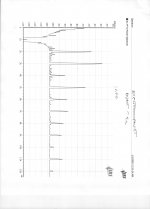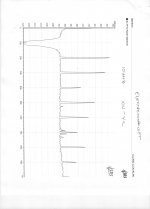BTW Any of you looked into this:
https://www.indiegogo.com/projects/sweetvinyl-sugarcube/#/
Whaddayouthink? Anything decent?
Jan
https://www.indiegogo.com/projects/sweetvinyl-sugarcube/#/
Whaddayouthink? Anything decent?
Jan
No Jan, I used the SR-1. Wanna see? '-)
However, I did buy it first by listening to it. You should try it too!
So, is there a point to these graphs other than this is a horrible amplifier and the 10kHz distortion is much higher than the 1kHz distortion?
BTW I did an interview with the guy who designed the basis for the Elektrokompaniet. It's on my website. Revealing.
https://linearaudio.nl/sites/linearaudio.net/files/images/An afternoon with Jan Lohstroh.pdf
Jan
Last edited:
No Jan, Jan L. did not design the 'heart' of this amp. Without Matti's major modifications, it would have been nothing at all. By the way, I first contacted Jan L. more than 40 years ago. His interview with you was a disappointment to me.
The amp actually measures with a normal thd meter, very well. The output is in dBV, but the test signal is 10Vrms, so each harmonic is 10 times lower. You did not catch that did you?
The amp actually measures with a normal thd meter, very well. The output is in dBV, but the test signal is 10Vrms, so each harmonic is 10 times lower. You did not catch that did you?
OK guys, with a conventional HP339 measurement, I get 0.01% at 1KHz, and at 10KHz, 0.025% distortion with 10Vrms out and a 4 ohm load. Not too bad for an amp having only 20dB of feedback. Also, with an 8ohm load and 10Vrms out, I get 0.0055% at 1KHz, and 0.0095% at 10KHz.
Last edited:
I guess what's bothering me here is that we humans tend to think in terms of certain paradigms. If thinking about bumps in frequency response, then we tend to try to understand things in those terms. That is not unlike thinking that harmonic distortion acting on frequencies above 10kHz can't be audible, but not thinking about IMD also present. Or people may sometimes look at opamps with THD specs like .00002% or something and say, no one could possibly hear that. But they don't think about the effects of the circuit the opamp is in. All these things are examples of the well-known cognitive bias Daniel Kahneman called WYSIATI (What You See Is All There Is). WYSIATI is extremely common in human thinking, so it's just something to be aware of and be on the lookout for.
That's a fair point and I can see how you took that from what I was saying. In this respect, however, I meant in a catch-all fashion, looking from an end-result backwards. So ultimately all this stuff has to affect what hits our ears, by whatever byzantine or direct mechanism.
We're hitting at two different sides of Occam's razor no less, mine as asking for direct mechanisms, and yours on not overly simplifying complex things (and baking in all kinds of hidden assumptions).
OK guys, with a conventional HP339 measurement, I get 0.01% at 1KHz, and at 10KHz, 0.021% distortion with 10Vrms out and a 4 ohm load. Not too bad for an amp having only 20dB of feedback.
No, not bad at all. And I'm sure there's a good amount of local feedback linearizing the intermediate stages, thus flattening the loop gain over bandwidth. Plenty of ways to skin a cat and pay attention to maximizing your performance bang for your loop gain buck.
actually Global Loop Gain is known to be the most powerful linearizing use of gain
but practical considerations, decades of many examples shows "other considerations" pull us back from that ideal
typicaly audio PA use local feedback loops in multiple places, locking up some of the potential froward gain, as in follower output stages, degeneration in diff pair, VAS and Dominant Pole Miller feedback
but the "flat loop gain over audio" really isn't justified when varying frequency dependent active device nonlinearities and human hearing, music spectrum weightings don't appear to be remotely "flat with frequency"
and resistively loading the VAS output to flatten loop gain certainly appears seriously wrong headed
but practical considerations, decades of many examples shows "other considerations" pull us back from that ideal
typicaly audio PA use local feedback loops in multiple places, locking up some of the potential froward gain, as in follower output stages, degeneration in diff pair, VAS and Dominant Pole Miller feedback
but the "flat loop gain over audio" really isn't justified when varying frequency dependent active device nonlinearities and human hearing, music spectrum weightings don't appear to be remotely "flat with frequency"
and resistively loading the VAS output to flatten loop gain certainly appears seriously wrong headed
Op amps max open loop gain. Otala amps max open loop bandwidth. There is an audible difference.
You can swap both behaviors trivially wanna bet on the audibility?
Well, I subjectively think that an AD825 will make a better sounding line amp than an AD797. I am not the only one, by the way.
But I can make the AD825 have a 100Hz OLBW and the AD797 a 20kHz one with a little positive feedback to the null pins. And BTW from the three terminals, plus input, minus input, and output you can not tell what has been done.
So as a "black box test" the situation has shifted. DBT of these experiments is asking too much, I wouldn't bother.
But I can make the AD825 have a 100Hz OLBW and the AD797 a 20kHz one with a little positive feedback to the null pins. And BTW from the three terminals, plus input, minus input, and output you can not tell what has been done.
If they are indistinguishable from each other when you do that, why bother manufacturing both?
If they are indistinguishable from each other when you do that, why bother manufacturing both?
Your kidding aren't you the audiophile audibility factor has little to do with reality. Please go back and review all the drivel written about how wide OLBW just sounds better.
I said only you can give an op-amp almost any OLBW with a little positive feedback that has nothing at all to do with all the other specs people actually care about.
Your kidding aren't you the audiophile audibility factor has little to do with reality. Please go back and review all the drivel written about how wide OLBW just sounds better.
I said only you can give an op-amp almost any OLBW with a little positive feedback that has nothing at all to do with all the other specs people actually care about.
Sure, I was kidding. I don't know why people make some of the attributions they do. If audio amplifier distortion is completely inaudible, it doesn't matter how one gets there. Distortion in audio amps only matters if it is audible. But, when audible it can matter a lot exactly what it sounds like. And apparently, some people may prefer the sound of a little distortion that they like rather than no distortion at all. Whether or not one could produce preferred distortion in some opamp circuit by using positive feedback to the bias pins, I have no idea.
Whether or not one could produce preferred distortion in some opamp circuit by using positive feedback to the bias pins, I have no idea.
No preferred distortion here just OLBW. There is probably no audible distortion in either case. As the fact remains the parties involved will not have their perceptions tested by any refereed method this is all just wasted bandwidth.
Constant feedback vs frequency requires constant OL gain vs frequency. This would mean that the distortion reduction factor is constant vs frequrency.
It only guarantees constant distortion vs frequency if it has constant OL distortion vs frequency. Normally this is not the case.
Jan
says who?.... It isn't so hard to do.
I mentioned RIAA specifically.... it shows up best there with varying amounts of neg fb vs freq. If you read phono reviews.... most of the time, you have comments about how it sounds at low vs mid vs high freqs. All areas different character.
That closes to a constant character with passive RIAA.
THx-RNMarsh
Last edited:
- Status
- Not open for further replies.
- Home
- Member Areas
- The Lounge
- John Curl's Blowtorch preamplifier part II

